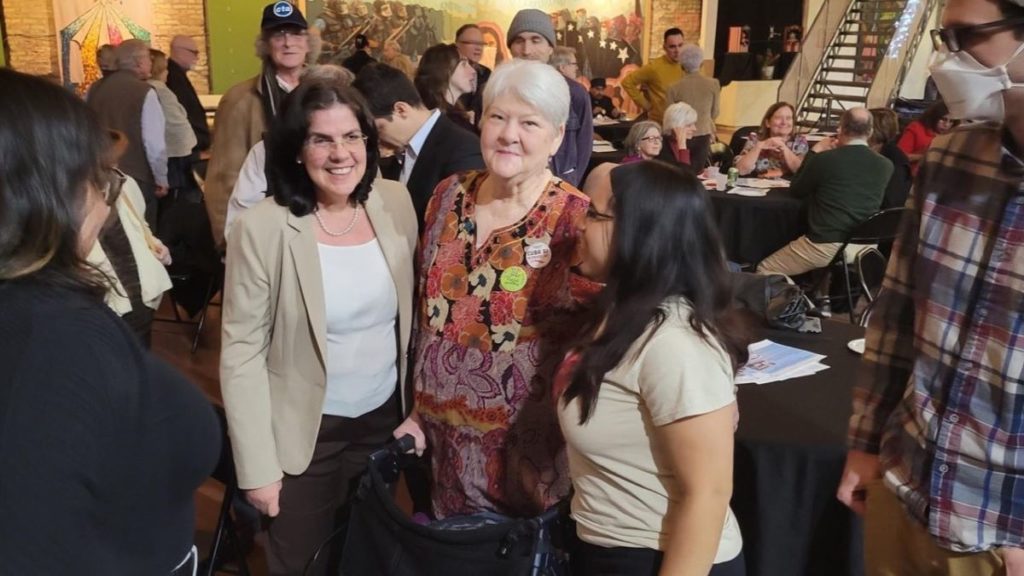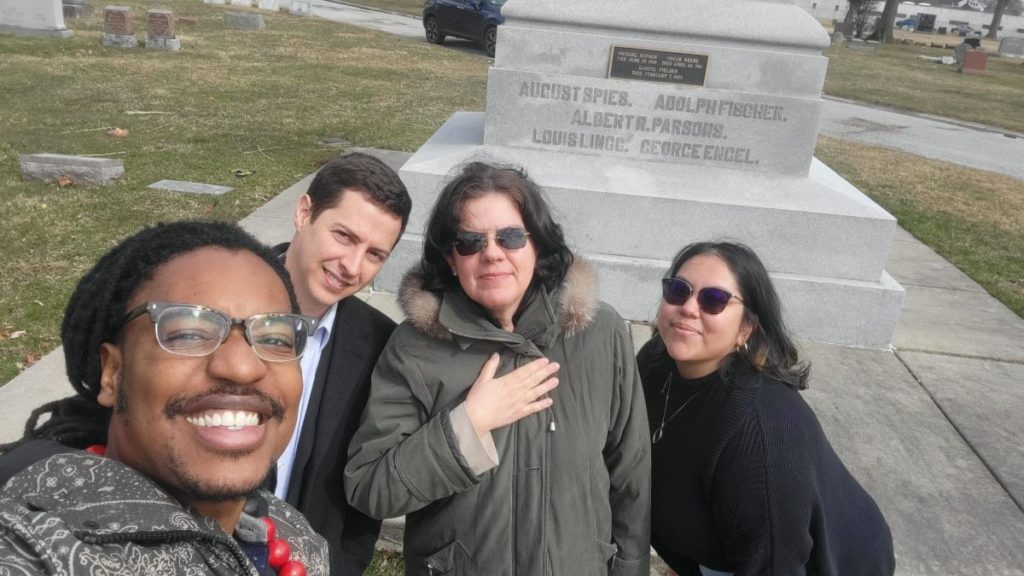In late March, the Chicago Cuba Coalition welcomed Lianys Torres Rivera, Cuba’s Ambassador and Charge d’Affaires, and David Ramirez, Second Secretary for the Embassy of Cuba in the United States. The visit was possible due to some easing of travel restrictions by the U.S. State Department. The ambassador’s aim was to meet with as many trade associations, unions, churches, politicians, community organizations and activists engaged in work to end the blockade of Cuba as possible in three days. Her mission is one that has been paramount in importance to her country for more than 60 years.
In 1961, the United States ceased diplomatic relations and simultaneously instituted a treacherous economic and commercial blockade against revolutionary Cuba — making it illegal for U.S. companies to do business with the small nation 90 miles off its coast.
The Obama administration allowed Cuba to have an embassy here in the United States in 2015. This one piece of diplomatic relations was restored, but the blockade was not lifted. Added to that stranglehold, in the final hours of the Trump administration, Cuba was designated by executive order as a “state sponsor of terrorism.” This order has since been re-issued by Biden. This designation makes illegal all transactions with Cuba by anyone in the world. In addition, Trump and former Secretary of State Mike Pompeo added additional coercive measures through sanctions, which have yet to be lifted. Washington has admitted this stranglehold’s aim is “to bring about hunger, desperation and overthrow of the government.”
Ambassador Torres Rivera had an enriching tour of Chicago, meeting with the Fourth Presbyterian Church that has a long history of solidarity work with churches in Cuba. Additionally, she attended a roundtable discussion on trade with Cuba with the International Trade Association of Greater Chicago. She also had the chance to meet with University of Chicago professors, Chicago City Council members, and other community members and activists to learn about and join in the struggle to remove Cuba from the SSOT list, break the blockade and normalize relations.
Two public events were planned for the Cuban officials’ visit. The first event was held at the University Church in Hyde Park. Dr. Kimberly Waller, who works with Afro-Cuban artists, brought a selection of art to be displayed, including paintings and clothing with paintings and drawings on them. On display as well were historical copies of Cuba’s literacy campaign documents.
At the start of the event Dr. Waller presented a painting made by a Cuban artist for the Ambassador. Dr. Waller’s speech included information on Cuba’s advancements that community members read aloud to attendees. People in attendance shared their experiences visiting and doing solidarity work for Cuba and one even shared their experience studying at the Escuela Latinoamericana De Medicina (Latin American School of Medicine). This event highlighted the positive relations between U.S. and Cuban people that have been maintained since the blockade tried to squash them! The people of the United States have so much to gain from having good relations with Cuba, and learning that we can have a better world, like the one that Cuba has built.
The second event was held at Segundo Ruiz Belvis Cultural Center. The gathering in the predominantly Latino neighborhood of Hermosa was welcomed by Jóse López, the director of the Puerto Rican Cultural Center, who spoke about the long history of solidarity between Puerto Rico and Cuba. “Cuba y Puerto Rico son de un pájaro las dos alas,” announced López, which translates to, “Cuba y Puerto Rico are both wings from the same bird.”

The ambassador participated in a question and answer session after her introduction to answer questions on why Cuba is suffering so hard. All questions led to the elephant in the room: the blockade. By the end, it became clear that the enemy of Cuba was the U.S. government, and that we here in the United States have the responsibility to fight to end the blockade. Towards the end of the event, there was a vibrant performance featuring Almafuerte, a psychedelic band that played Cuban music.
Members of the Party for Socialism and Liberation along with members of the Chicago Cuba Coalition played important roles in organizing the events and travel for the ambassador and the second secretary. This visit was crucial in developing better relations and political understanding of Cuba’s economy and the conditions Cuba has been facing under the blockade. It was a chance for the people of Chicago to connect with Cuban officials and learn how to get involved in the struggle.
PSL members also helped drive and provide security for the ambassador and second secretary, and were able to take them to see the memorial to the Haymarket martyrs, alongside other Chicago memorable spots like Lake Michigan and the Garfield Conservatory.

All in all, this visit informed Chicagoans on why fighting for the end of the blockade is the greatest act of solidarity we can do for Cuba, and why we as Americans have so much in common with the Cuban people. As we move forward here with our solidarity work with Cuba, one popular revolutionary saying rings true: Pa’lante!
Feature photo: Cuban officials Lianys Torres Rivera and David Ramirez (center) with PSL Chicago members at University Church in Chicago. Liberation photo




